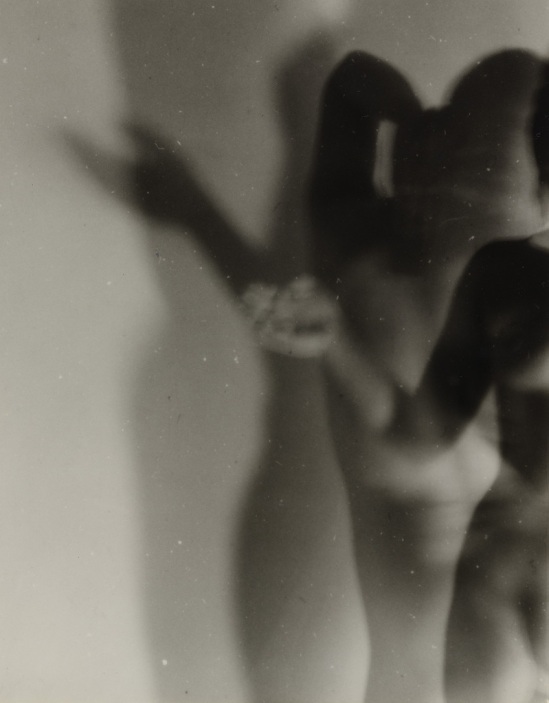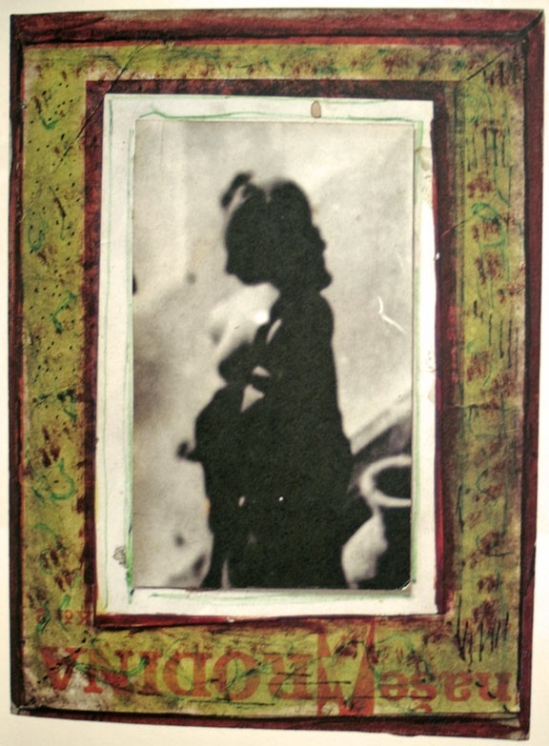Lou Landauer was a German woman photographer
« Lou Levi was born 1897 in Cologne where she grew up with her two sisters Stefani and Bella. At the age of 26, in 1923, Lou married the lawyer Georg Landauer (1895 – 1954). Landauer was an important Zionist politician who over the years had many central positions. After WWII he was involved in the reparation negotiations between Germany and the State of Israel.
After her marriage and training at the Trade Academy in Cologne in 1924, Lou Landauer appears to have developed an interest in photography and registered at the Staatliche Fotoschule München where her name is in the student list of 1928/29.
In 1930, she moved to Berlin, where she continued her photography studies possibly at the Lette-Verein. The archive of the Lette-Verein is unfortunately incomplete and there is no information regarding her time there. The magazine Life in Palastine, Nr. 22, 1946 refers to Lou Landauer as “…a former student of famous schools in Munich and Berlin”. The only existing document from her Berlin time is a photograph taken in her apartment which shows her together with her parents.
In 1934 she and her husband emigrated together with her parents to Palastine. As of 1933 her husband Georg was the director of the German department of the Jewish Agency for Palestine and director of the Central Bureau for the Settlement of German Jews.
Lou Landauer first worked as a press photographer for the Jüdische Rundschau, which was still published in Berlin. The magazine published her photographs of the ceremonial laying of the foundation stone (March 19, 1935) of the new AHAWA building in Kirjat Bialik near Haifa. The children’s home of the same name in Auguststr., Berlin had been closed a year before in 1934 by the National Socialists.
In the spring of 1936 the filming of the documentary “Aufbruch der Jugend” was completed: Lou Landauer was producer and camerawoman (director: Eva Stern, Marta Goldberg). The Arbeitsgemeinschaft Kinder- und Jugend-Alijah Berlin contracted the film. The premiere took place on May 25, 1936 at the Berlin Logenhaus where Leo Baeck gave an introductory speech.
The day after the premiere Rachel Wischnitzer-Bernstein wrote about the event in the Gemeindeblatt and particularly praised the “achievement and sensitivity” of the photographer and camerawoman Lou Landauer. The CV-Zeitung also reported in detail about the film. Today the film resides in the Steven Spielberg Archive, Jerusalem.
Until now the whereabouts of Lou Landauer’s correspondence or larger estate is unknown. The only secured correspondence is that with Else Lasker-Schüler which are documented among the works and letters of the poetess (compiled by Dr. Karl Jürgen Strotzki, Lohmar).
In 1942 she began her work as a teacher at the Bezalel Hechadasch, the new Applied Arts School in Jerusalem. The former Applied Arts School existed between 1906 – 1928 and was later newly founded with the help of the Mandats administration and the Jewish Agency.
In the 1940s Lou Landauer taught courses in the department of artistic photography and she is referred to as “Instructor of Photography at Bezalel” (Life in Palestine, 22, 1946). Among the directors of the new school were Hermann Struck and Erich Mendelsohn.
Here she most likely met the photographer Helmar Lerski who had his own photography school in Tel Aviv. In 1945 H. Lerski showed his portraits at Bezalel and in December of the same year Lou Landauer also exhibited there, showing a cross section of her work for the first time, including photograms, nature studies, portraits (double exposures) and still lifes. A poster of the exhibition and various newspaper articles attest to this such as Jedioth Chadaschoth (‘Neueste Nachrichten’) Dec. 7, 1945 and The Palestine Post, Dec. 10, 1945.
In 1949, Landauer went to the USA to attempt a new start. There she worked as a commercial photographer for various magazines and experimented with the technically complicated color carbro process. By the 1950s, she appears to have given up professional photography all together and worked as an assistant librarian at the Leo Baeck Institute in New York.
A small album from her estate contains photographs (1960-1981) from various Swiss locations, most showing her with her sisters and other relatives.
Lou Landauer died in 1991, presumably in Lugano, Switzerland. » Provenance: From the estate of Lou Landauer.

Lou Landauer -Abstract study, Circa 1945. Vintage gelatin silver print

Lou Landauer Abstract study , 1941 Vintage gelatin silver print

Lou Landauer Photogram of glasses , 1940s Vintage gelatin silver print on strong paper

Lou Landauer Photogram of photo lamps , 1941 Vintage ferrotyped gelatin silver print

Lou Landauer -Abstract study with glass 1942. Vintage ferrotyped gelatin silver print

Lou Landauer -Abstract botanical study Abstract botanical study (multiple exposure with photogram negatives). 1940s. Vintage gelatin silver print.

Lou Landauer -Detail studie, Circa 1945

Lou Landauer- Photogram. 1942. vintage gelatin silver print

Lou Landauer- Photogram . 1942. vintage gelatin silver print

Lou Landauer Photogram of violets Vintage gelatin silver print on strong paper

Lou Landauer Photograms of flowers vintage gelatin silver print

Lou Landauer-Detail studie, Circa 1945

Lou Landauer – Cover for a crime novel cover Design for crime novel book cover. 1943. Vintage matte gelatin silver print

Lou Landauer- Design for a book cover for Arsenic and Old Lace by Joseph Kesselring.1946. Vintage matte gelatin silver print with hand painted titles in red

Lou Landauer – Photogram , 1940s Vintage ferrotyped gelatin silver print

Lou Landauer- Female nude and net (double exposures). 1930. vintage ferrotyped gelatin silver print

Lou Landauer- Self-Portrait in Israel , 1943 vintage semi-matte gelatin silver print





![Osamu Shiihara-Title Unknown [Mannequins ]] n.d.](https://lapetitemelancolie.net/wp-content/uploads/2013/02/osamu-shiihara-title-unknown-mannequins-n-d.jpg?w=549&h=461)





















![Osamu Shiihara-[Variant of 'Ecstasy'],1 fin 1930](https://lapetitemelancolie.net/wp-content/uploads/2013/02/osamu-shiihara-variant-of-ecstasy1-fin-1930.jpg?w=549&h=655)
![Osamu Shiihara-[Variant of 'Ecstasy'], fin 1930](https://lapetitemelancolie.net/wp-content/uploads/2013/02/osamu-shiihara-variant-of-ecstasy-fin-1930.jpg?w=549&h=656)
![Title Unknown [variant of 'The Hand'] , 1938](https://lapetitemelancolie.net/wp-content/uploads/2013/02/title-unknown-variant-of-the-hand-1938.jpg?w=549&h=694)


![Osamu Shiihara-Title Unknown [Mannequins by the Roadside]] n.d.](https://lapetitemelancolie.net/wp-content/uploads/2013/02/osamu-shiihara-title-unknown-mannequins-by-the-roadside-n-d.jpg?w=549&h=439)



































































Vous devez être connecté pour poster un commentaire.